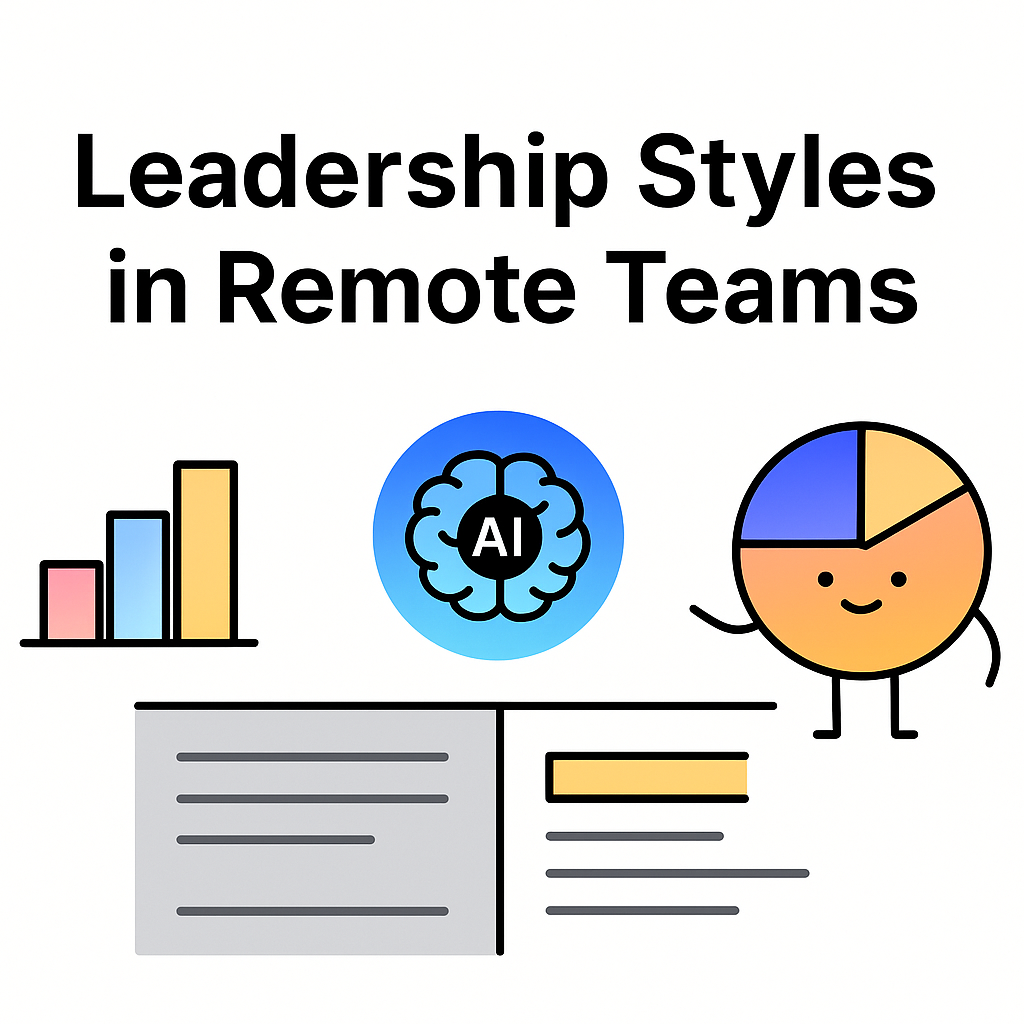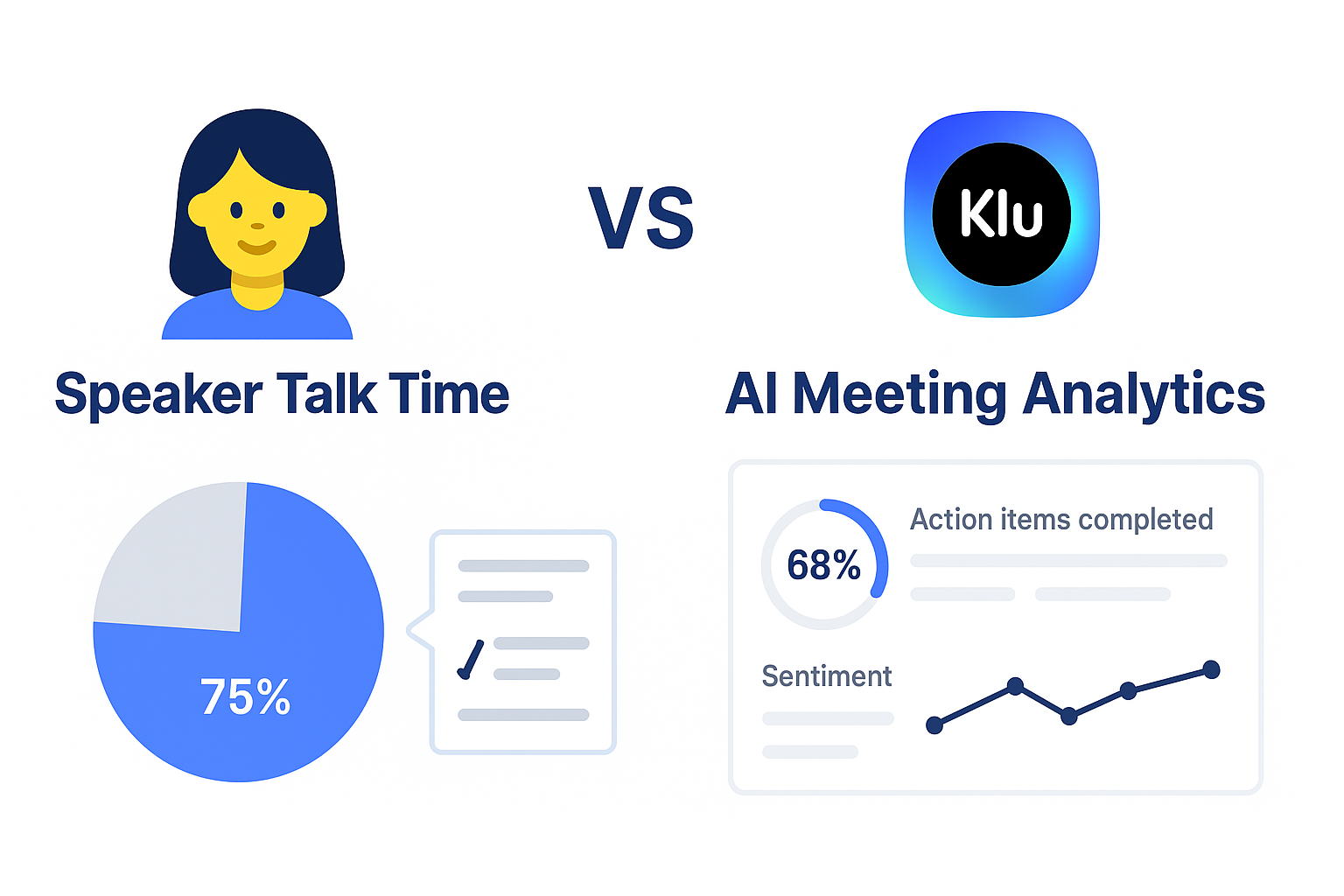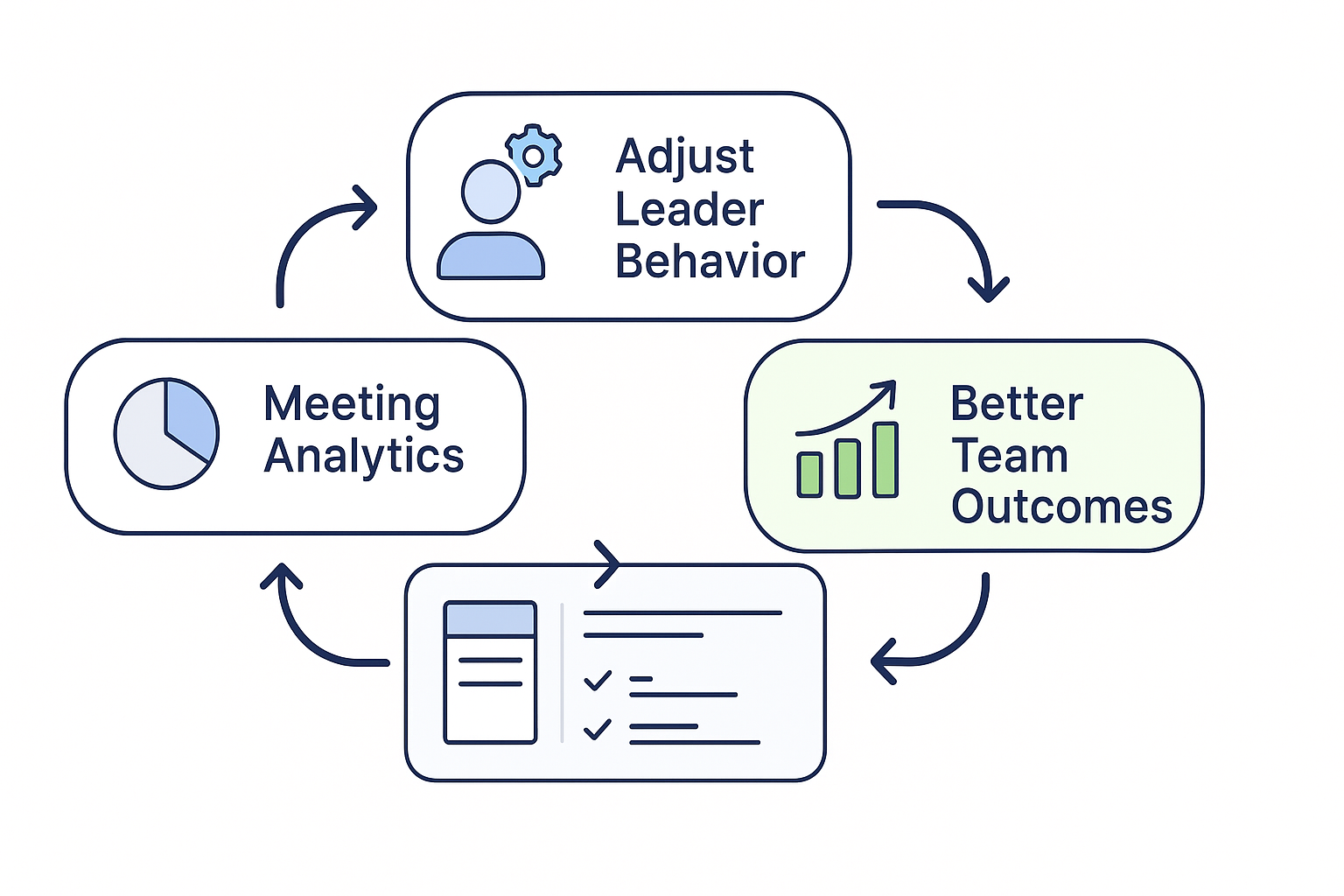 Sami AZ
Sami AZ
Remote and hybrid teams are now standard in the global workplace. According to a 2025 survey of over 1,000 organizations, only 24 % of remote/hybrid companies say their culture is strong, and just 30 % believe their leadership is equipped to guide distributed teams.
These figures underscore a challenge: leading remote teams requires different skills and visibility than in-office leadership. What worked in physical settings does not always translate online.
Meeting analytics and AI insights now give leaders unprecedented data: speaker time, tone, participation patterns, follow-through from decisions, even conversational balance. These insights shine a light on leadership behaviour, helping remote leaders adjust in real time.
In this article, we’ll explore:
Recent thought-leadership describes five leadership styles dominating 2025: The Coach, The Adaptive Leader, The Visionary, The Data-Driven Leader, and The Transparent Leader.
Remote teams particularly benefit from adaptive, coach-style, and data-driven leaders because they manage change, measurement, and human connection across distance.
Remote leadership differs in key ways:
Understanding these shifts is crucial for leaders aiming to support engagement, clarity and accountability.
AI meeting tools now capture more than transcription and summaries. They unlock metrics and patterns such as:
These insights allow remote leadership to diagnose meeting health, team engagement, and leadership style in action. Here are some concrete examples:
If analytics show a leader or small group speaking 70 % of time, that may indicate a directive style dominating. That may reduce team input and negatively impact engagement.
If action items generated from leadership-led meetings show low follow-through, trust and efficacy degrade. That implies leadership style may need to shift to more accountability-focused.
Sentiment analysis may reveal persistent negative tone or high risk language (blocked, delay, urgent) across project calls. That may signal a reactive leadership approach rather than proactive management.
These metrics transform leadership from intuition to actionable data.

Let’s map specific meeting-metric patterns to leadership styles and what they imply for remote teams:
Characteristics: High team participation, frequent questions, empowerment of others.
Metrics evidence: Balanced speaker time, high follow-through on team-owned tasks, positive sentiment, high engagement across roles.
Characteristics: Flexible leadership mode, adjusts to context, inclusive of remote input.
Metrics evidence: Strong participation from distributed team members (time zones), consistent engagement regardless of location, adaptive meeting structures.
Characteristics: Decisions backed by metrics, visible KPIs, structured alignment.
Metrics evidence: High use of decision-tagged agenda items, transparent action-item tracking, low time wasted in meetings, consistent follow-through.
Characteristics: Inspiring direction, less operational detail, high-level framing.
Metrics evidence: Large share of meeting time focused on direction-setting, moderate team participation, high positive sentiment but some need for follow-through mechanisms.
Characteristics: Openness, feedback oriented, shared accountability.
Metrics evidence: Low hierarchy in discussion, high cross-role visibility, high use of collaborative tools (chat, shared docs) linked from meeting notes.
By tracking these meeting-level data points, leaders get clear input on how their leadership style manifests and how the team responds.
Leading remote teams brings particular difficulties. Meeting analytics and AI insights help mitigate them.
Remote teams often span multiple zones. Analytics can show which regions or roles are under-represented. Leaders can adjust agenda to balance input.
Analytics may flag low verbal participation from certain roles or locations. Leaders can engage those individuals proactively.
If meeting lengths grow and sentiment trends negative, data can signal meeting inefficiency. Leaders can switch to shorter formats or asynchronous alternatives.
With fewer physical cues, remote teams struggle with accountability. Analytics on action-item completion provide transparency and early warnings.
Leader audio dominance or repetitive speaker roles may stifle team voice. Speaker-time analytics expose those patterns.
In these ways, AI insights become a compass for remote leaders to adjust strategy in real time.
Klu moves beyond transcription into leadership analytics. Here’s how it supports remote leaders:
Leaders can use the following roadmap to act on meeting analytics:

Consider the following simplified case scenarios drawn from composite data:
Case A: Sales-Led Remote Team
A sales team in four time-zones consistently lost follow-up on client commitments. Analytics revealed leader spoke 65 % of time and action-items had 48 % completion in 24 hours. The leader shifted to share leadership by rotating facilitation, reduced speaker time to 40 %, and pushed tasks via Slack workflows. Completion climbed to 78 % and NPS improved by 12 points.
Case B: Product/Engineering Distributed Team
Sentiment analysis flagged rising negative tone in sprint reviews. Participation from one region was <10 % of speaking time. Leadership introduced structured “round-table help” segments, rotated meeting lead, and used Klu insights monthly. Participation rose to 30 % per region and sprint delivery delays dropped by 22 %.
These illustrate how meeting-analytics inform leadership improvement.
Key metrics remote leadership should monitor via AI insights include:
Monitoring these offers clarity on leadership style outcomes.
Q1: Can meeting analytics replace leadership coaching?
No. Analytics provide data, but leadership growth still requires intent, reflection and behavioural change. Use analytics as feedback, not a substitute.
Q2: Are meeting analytics intrusive or privacy-violating?
It depends on how the tool is configured. Data should be aggregated, anonymized as needed, and aligned with GDPR and internal policies. Tools like Klu support enterprise compliance.
Q3: Can I tailor dashboards to my leadership style?
Yes. Leadership analytics should allow custom goals (eg more participation vs faster decisions) and the tool should surface metrics relevant to your style.
Q4: How often should I review leadership analytics?
Weekly for immediate trends (eg this week’s meetings), monthly for behavior patterns, quarterly for leadership style alignment.
Q5: Do these analytics work for small teams?
Absolutely. Even 5-person remote teams benefit when you track who speaks, how decisions flow and what tasks result from meetings.
Leading remote teams in 2025 demands more than video conferences and chat channels. It demands visibility into how conversations unfold, how decisions get made and how action follows.
Meeting analytics powered by AI turn leadership behaviour from guesswork into data-driven insight. Leaders who adopt these insights and evolve their style become more aligned, visible and effective.
If you want to equip your leadership team with the tools to measure, adapt and thrive in distributed collaboration, you can explore how Klu can surface those leadership insights.
Try Klu Free and see how automation-first meeting workflows win in speed and structure.